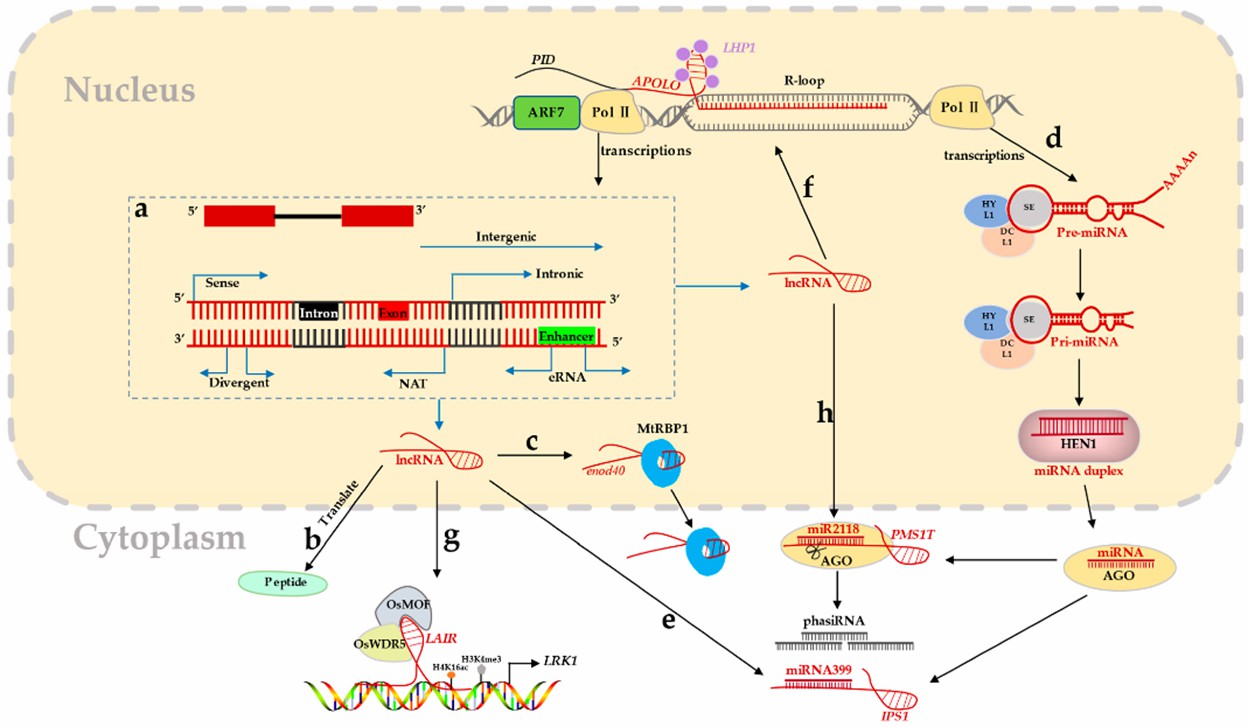Mechanism Analysis of Plant Non-Coding RNA to Nematode Infection
Plant nematodes, which can damage many crops, are the world's most difficult soil-borne pathogens to control. Through their secretions, nematodes induce and regulate the cellular development of their host plants to establish specialized giant cells for themselves, thus providing a constant supply of nutrients and establishing a stable intercropping relationship. The discovery that microRNAs (miRNAs), long non-coding RNAs (lncRNAs), and circular RNAs (circRNAs) among non-coding RNA (ncRNAs) stimulate plant immunity against nematode infestation, which provides a new molecular regulatory model for the mechanism of resistance to plant nematode infestation.
Lifeasible is a credible provider of high-quality functional analysis services of plant non-coding RNA to nematode infection. Our platform is equipped with state-of-the-art facilities and highly experienced staff to support projects in all areas. We guarantee to deliver results on time to our customers.
Analysis of miRNA Response to Nematode Infection in Plants
- The common feature of ncRNAs is that they can be transcribed from the genome but are not translated into proteins and can perform their respective biological functions at the RNA level. The main function of miRNAs is to inhibit target gene function by causing degradation of target mRNA or preventing translation of target mRNA.
- Lifeasible provides analysis of miRNA in response to nematode infection in plants, including the miR396 / GRF molecular model, which regulates feeding cell formation; the miR390 / TAS3 / ARF3 molecular model, which regulates root node formation; the potential interaction of miR319 / TCP4 and miR396 / GRF, which may mediate resistance to root nematodes; and the miRNA172 / TOE1 / FT gene regulatory model, which plays a vital role in nematode infection of giant cell formation and development by modifying auxins.
 Fig.1 The source and mechanism of lncRNA. (Zhao Z et al., 2022)
Fig.1 The source and mechanism of lncRNA. (Zhao Z et al., 2022)
Analysis of lncRNA and circRNA Response to Nematode Infection in Plants
- lncRNAs are a class of non-coding RNAs greater than 200 nucleotides in length. circRNAs are a class of ncRNAs produced by selective shearing of precursor mRNAs that covalently bind at the 3' and 5' ends to form a circular single-stranded closure. lncRNAs and circRNAs mostly act through miRNAs to regulate mRNAs when plants are threatened by pathogens.
- We provide analysis of lncRNA and circRNA in response to nematode infection in plants. For example, the lncRNA / circRNA-miRNA-mRNA regulatory network plays an important role in plant response to nematode infestation.
Lifeasible provides fast turnaround, high-quality services at competitive prices for customers worldwide. Our advanced technical platforms can help our clients complete the research process with quality and quantity. If you are interested in our services or have any questions, please feel free to contact us or make an online inquiry.
Reference:
- Zhao Z, et al. (2022). "Long Non-Coding RNAs: New Players in Plants." Int J Mol Sci. 23 (16), 9301.
For research or industrial raw materials, not for personal medical use!
 Fig.1 The source and mechanism of lncRNA. (Zhao Z et al., 2022)
Fig.1 The source and mechanism of lncRNA. (Zhao Z et al., 2022)